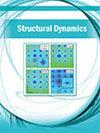辐射损伤是x射线自由电子激光高分辨率单粒子成像的限制因素吗?
IF 2.3
2区 物理与天体物理
Q3 CHEMISTRY, PHYSICAL
引用次数: 11
摘要
原子分辨率单粒子成像的前景是X射线自由电子激光器发展的科学驱动因素之一。从一开始就认为,强X射线脉冲对样品造成的损伤是实现单粒子亚纳米X射线成像的限制因素之一,并且X射线脉冲需要尽可能短。基于蛋白质在不同持续时间(5fs、25fs和50fs)的X射线场中的分子动力学模拟,我们表明,由辐射损伤引起的衍射信号中的噪声小于其他来源的预期,例如样品的不均匀性和X射线发射到发射的变化。这些发现显示了使用自由电子激光器进行高分辨率单粒子成像的可行性的另一个方面,其中使用更长持续时间的X射线脉冲仍然可以提供高于库仑爆炸噪声的有用衍射信号。本文章由计算机程序翻译,如有差异,请以英文原文为准。
Is radiation damage the limiting factor in high-resolution single particle imaging with X-ray free-electron lasers?
The prospect of single particle imaging with atomic resolution is one of the scientific drivers for the development of X-ray free-electron lasers. The assumption since the beginning has been that damage to the sample caused by intense X-ray pulses is one of the limiting factors for achieving subnanometer X-ray imaging of single particles and that X-ray pulses need to be as short as possible. Based on the molecular dynamics simulations of proteins in X-ray fields of various durations (5 fs, 25 fs, and 50 fs), we show that the noise in the diffracted signal caused by radiation damage is less than what can be expected from other sources, such as sample inhomogeneity and X-ray shot-to-shot variations. These findings show a different aspect of the feasibility of high-resolution single particle imaging using free-electron lasers, where employing X-ray pulses of longer durations could still provide a useful diffraction signal above the noise due to the Coulomb explosion.
求助全文
通过发布文献求助,成功后即可免费获取论文全文。
去求助
来源期刊

Structural Dynamics-Us
CHEMISTRY, PHYSICALPHYSICS, ATOMIC, MOLECU-PHYSICS, ATOMIC, MOLECULAR & CHEMICAL
CiteScore
5.50
自引率
3.60%
发文量
24
审稿时长
16 weeks
期刊介绍:
Structural Dynamics focuses on the recent developments in experimental and theoretical methods and techniques that allow a visualization of the electronic and geometric structural changes in real time of chemical, biological, and condensed-matter systems. The community of scientists and engineers working on structural dynamics in such diverse systems often use similar instrumentation and methods.
The journal welcomes articles dealing with fundamental problems of electronic and structural dynamics that are tackled by new methods, such as:
Time-resolved X-ray and electron diffraction and scattering,
Coherent diffractive imaging,
Time-resolved X-ray spectroscopies (absorption, emission, resonant inelastic scattering, etc.),
Time-resolved electron energy loss spectroscopy (EELS) and electron microscopy,
Time-resolved photoelectron spectroscopies (UPS, XPS, ARPES, etc.),
Multidimensional spectroscopies in the infrared, the visible and the ultraviolet,
Nonlinear spectroscopies in the VUV, the soft and the hard X-ray domains,
Theory and computational methods and algorithms for the analysis and description of structuraldynamics and their associated experimental signals.
These new methods are enabled by new instrumentation, such as:
X-ray free electron lasers, which provide flux, coherence, and time resolution,
New sources of ultrashort electron pulses,
New sources of ultrashort vacuum ultraviolet (VUV) to hard X-ray pulses, such as high-harmonic generation (HHG) sources or plasma-based sources,
New sources of ultrashort infrared and terahertz (THz) radiation,
New detectors for X-rays and electrons,
New sample handling and delivery schemes,
New computational capabilities.
 求助内容:
求助内容: 应助结果提醒方式:
应助结果提醒方式:


